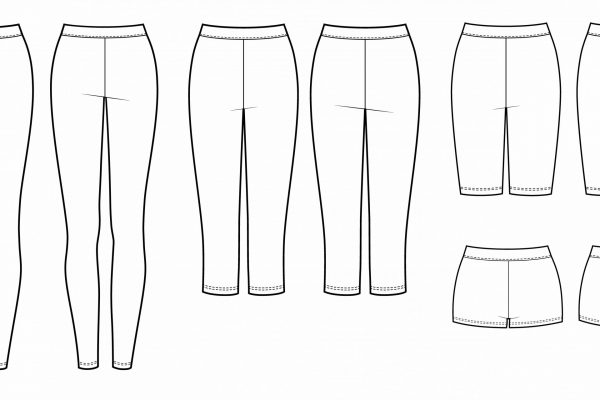

Length
Demystifying The Finger Rule for Shorts
Modified: January 2, 2024
Gain a clear understanding of the finger rule for shorts, its purpose and application in particular with running shorts in this informative article.
In the world of fashion and fitness, guidelines help determine the best fit, length, and style for clothing, and running shorts are no exception. One commonly cited guideline when it comes to the length of shorts is the finger rule. But what exactly is the finger rule for shorts? How is it applied, and how relevant is it today, especially in choosing the right running shorts? Let’s dive into this interesting topic.
Understanding The Finger Rule for Shorts
The finger rule, sometimes referred to as the “fingertip rule,” is a simple guideline used to gauge the appropriateness of the length of shorts or skirts. According to the rule, when standing straight with your arms relaxed at your sides, the hem of your shorts should be at or longer than your fingertips. In other words, your shorts should not be shorter than where your fingers reach.
This rule has been used, often in school settings, to promote modesty and prevent overly revealing clothing. However, its practical application and relevance, particularly for athletic wear such as running shorts, are debatable.
The Finger Rule & Running Shorts
For runners, the finger rule might not be the most practical or relevant guideline. The primary focus when choosing running shorts is typically comfort, freedom of movement, and the specific demands of the runner’s body and the running conditions, rather than modesty or style alone.
Here are some key considerations for runners:
- Freedom of Movement: Running requires a high level of mobility, which means shorts need to be flexible and not overly restrictive. This often means that running shorts are shorter than the length dictated by the finger rule.
- Comfort: Discomfort can significantly impact a runner’s performance. Shorts that are too long may cause chafing, while those too short may not provide adequate coverage. Each runner must find their comfort zone regarding short length.
- Personal Preference: Every runner has a unique comfort zone, running style, and body shape. Some runners might prefer longer shorts that provide more coverage, while others may opt for shorter ones that allow more freedom of movement.
- Climate and Weather Conditions: The weather and environmental conditions where you’ll be running also play a significant role in deciding the best shorts length. In warmer climates, shorter shorts can help keep you cool, while longer ones might be more suitable for cooler, windy environments.
- Type of Running: The type of running you do also matters. Trail runners might prefer longer shorts to protect against brushes with plants, while sprinters often choose shorter ones for freedom of movement.
Moving Beyond the Finger Rule
While the finger rule for shorts might be a handy guideline in some situations, in the world of running and fitness, performance and comfort often take precedence over such rules. Instead of relying solely on the finger rule, here are some other factors you might consider when choosing running shorts:
- Material: Look for breathable, sweat-wicking fabrics that will keep you dry and comfortable throughout your run.
- Built-in Features: Consider running shorts with built-in liners for additional support, and pockets for carrying essentials like keys or energy gels.
- Waistband: A comfortable, adjustable waistband is crucial. It should be secure but not too tight, and it shouldn’t chafe.
- Visibility: If you run early in the morning or late in the evening, choose shorts with reflective elements to enhance your visibility.
Conclusion
While the finger rule for shorts is a widely known guideline, its application in choosing running shorts is limited. Comfort, freedom of movement, personal preference, and the specific demands of the type of running and the running conditions are far more crucial considerations. As with any running gear, the best running shorts are the ones that make you feel comfortable and confident. Indeed, your running shorts should enhance, rather than hinder, your performance.
Frequently Asked Questions
What is the finger rule for shorts?
The finger rule for shorts, also known as the fingertip rule, is a guideline stating that when you stand straight with your arms relaxed at your sides, your shorts should not be shorter than where your fingertips reach.
Does the finger rule apply to running shorts?
While the finger rule can be a useful guideline in some contexts, it’s not typically the most practical or relevant when it comes to running shorts. Factors such as comfort, freedom of movement, personal preference, and the demands of the running conditions often take precedence.
How should I choose the right length for my running shorts?
Choosing the right length for your running shorts depends on certain factors. These include your personal comfort, the degree of mobility you desire, and the conditions in which you’ll be running. Some runners prefer shorter shorts for greater freedom of movement. Others, however, might prefer longer ones for more coverage or protection.
Are running shorts typically shorter than the length dictated by the finger rule?
Yes, running shorts are often shorter than the length dictated by the finger rule. This is because shorter shorts can provide a greater range of motion, which is beneficial for running.
What factors should I consider when choosing running shorts?
When choosing running shorts, consider the material (it should be breathable and sweat-wicking). Also take into account built-in features like liners or pockets, the waistband (comfortable and adjustable), and visibility elements if you run in low-light conditions. The length of the shorts should be guided by your comfort and the demands of your running conditions.